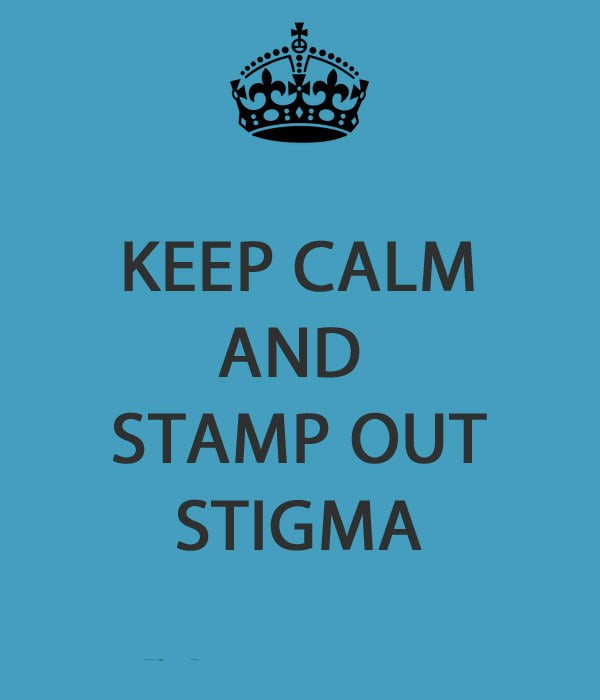Event Description
NC DMH/DD/SAS DEI Council Black History Lunch & Learn Series
Every Wednesday throughout the month of February, from noon to 1 p.m.
Learn from one of the leading demographers in the country about the major demographic shifts in NC and the US and their impact on public service systems.
YOU DON'T WANT TO MISS IT!
Event name: Beyond Tuskegee: Historical Medical Traumas as Triggers for African Americans’ Mistrust of Health and Public Service Systems
https://ncgov.webex.com/ncgov/onstage/g.php?MTID=e8e48e69fd631fe271b6026a8fe6f78aa
Event Description
NC DMH/DD/SAS DEI Council Black History Lunch & Learn Series
Every Wednesday throughout the month of February, from noon to 1 p.m.
Learn from one of the leading demographers in the country about the major demographic shifts in NC and the US and their impact on public service systems.
YOU DON'T WANT TO MISS IT!
Event name: Warning: Demographic Headwinds Ahead
https:/ncgov.webex.com/ncgov/onstage/g.php?MTID=e2eb2861e8b2c2b71051d3073eecf7b12
Event Description
NC DMH/DD/SAS DEI Council Black History Lunch & Learn Series
Every Wednesday throughout the month of February, from noon to 1 p.m.
Learn from one of the leading demographers in the country about the major demographic shifts in NC and the US and their impact on public service systems.
YOU DON'T WANT TO MISS IT!
Event name: Warning: Demographic Headwinds Ahead
https:/ncgov.webex.com/ncgov/onstage/g.php?MTID=e2eb2861e8b2c2b71051d3073eecf7b12

Here is an audio/video upload of a presentation called “Narcotics Anonymous: The Early Story.” I’ve listened to it time and again. This fascinating talk has been given at NA World, and on various continents and regions of the globe.
My other favorite is this bit of writing titled “Narcotics Anonymous: Its History and Culture.”
I strongly encourage everyone to check these resources out. Personally, I’m waiting for the book.
As an aside, I’ll add that the work of gathering this information is itself quite amazing.
Bill recently suggested that we’re all vulnerable to engaging in abusive behavior. Bill suggested that we all be mindful about that human tendency and maintain vigilance to prevent it.
That post got me thinking about Chris Budnick‘s open letter of amends and I wanted to share it with you now.
Earlier today Jason Schwartz posted on the notion that the word “relapse” is stigmatizing, that the preferred term is “recurrence of use”, and the lack of empirical evidence addressing this topic.
I will add a little more.
“Relapse” is currently my preferred term rather than “recurrence of use”. Why?
In clinical work focused on relapse prevention, the term “relapse” means “return to symptoms”. The basic idea is that one monitors symptoms, and redirects accordingly. This basic approach is used for many primary health and mental health problems.
In the case of relapse prevention therapy (RPT) for moderate to severe substance use disorders, one mobilizes to identify symptoms and redirect prior to use as well as after.
Similarly, in the Transtheoretical model of change, also known as “Stages of Change” (SOC), the stage called “relapse” signifies a return to symptoms and does not only mean “return to use”.
At a professional conference some years ago I presented a break out session on relapse prevention. The conference materials included the phrase “recurrence of use” describing the session.
I started the session by mentioning the new thinking about some of the possible problems associated with the word “relapse” and the push to replace that word with the phrase “return to use”.
Next, I explained the reasons for my reluctance to make that change, at that time. I emphasized that:
- We need to not lose certain important ideas found in Relapse Prevention Therapy, regardless of words.
- As we train new clinicians we should retain a focus on the early phase of return to symptoms, identifying symptoms, and redirecting both before and after use resumes.
There are at least two major and separate approaches to Relapse Prevention Therapy that use the word “relapse” as a technical term. These approaches have differing theories, glossaries, and methods.
The model by Gorski is one of the two models. Gorski’s RPT is derived from aggregating real clinical experiences. The model by Marlatt is the other major model. Marlatt’s RPT is derived from aggregating results of research and is rooted in Cognitive-Behavioral Therapy.
For me, both of those schools of RPT, when combined with the Transtheoretical model of change, equal the necessary and sufficient clinical consensus on the usefulness and appropriateness of the word “relapse” over merely saying “recurrence of use”.
I look forward to research studies examining the impacts of these differing words and terms. Hopefully underlying attitudes will be examined as well, so we can better identify everything that is important for us to change, and to retain.
I’ll mention that this area of inquiry reminds me of the work I read in the 1980’s and 1990’s by John Caplehorn examining impacts of clinician and clinic attitude during methadone maintenance in Australia.

I’ve posted quite a bit on language in advocacy over the years.
Most recently I posted about the choice between words (“chronic brain disease”) that evoke less blame but more pessimism about change, or words (“problem”) that evoke more blame but more optimism about change.
A couple of months ago, I examined a few examples of controversial language and the impact of attitudes vs. word choice. I also called for more discernment about language that has an innate negative valence vs. language that may have been tainted by the attitudes of others. Where language is tainted by attitudes, maybe our locus for change should be the attitudes rather than the language.
Between those two posts, I shared a tweet from Keith Humphreys on a “peculiar ‘conspiracy'” among people who see themselves as compassionate toward people with addiction, but actually contribute to cultural pathologizing and pity toward them.
Keith Humphreys (yes, I’m a fan) recently posted a series of tweets about changes in “acceptable” language on the basis perceived stigmatizing effects.
He continues with questions about whether some advocacy to improve language is not only ineffective, but might be self-defeating.
He describes the lateral violence that often accompanies language advocacy. (Also, check out Bill’s recent post asserting that we shouldn’t think ourselves immune to abusive behavior.)
He highlights the absurdity of the lateral violence in the context of the instability and circularity of many of these language changes.

Our systems of care have never actually been designed to meet the needs of persons with substance use disorders. I am not disparaging those early pioneers or those that came after who have worked very hard to implement even small elements of what an effective care system should include. All the way back to the “28-day treatment model” and even prior to that point. Short term, acute focused care that most often delivers less than the amount of care needed, provided through standalone programs without a systematic focus on supporting the process of people obtaining and sustaining long term recovery.
It also seems that every incremental improvement we have achieved as a field is then sold as a panacea and ultimately undermines our efforts to develop the system of care we actually need. When we have developed longer term, comprehensive programs for those who had more severe addictions and low recovery capital, our care systems have worked overtime to whittle them away to the point that they also provide short term care that subsequently becomes ineffective. Externally society then believes that treatment does not work, and people do not recover even when we know this is not what is actually happening. Our systems are failing, not the people.
We have an SUD care system built on a foundation of stigma and implicit bias against persons with substance use disorders. Facing these forces, pioneers for care and all of us who have come after have had to settle with what we can get, not what we need. The undertow against us is powerful yet at times hard to detect. I have talked to more than a few researchers and people who work in our state and federal bureaucracies who will not identify that they are in recovery because they know once they do, their views will be discounted and dismissed – within the very institutions charged with forging our path forward. Read that last sentence again and digest what that means.
Significant forces, much better resourced, focus on cutting care and offer window dressing or short-term strategies. Anything but investing in a comprehensive care system that supports long term recovery. If you disagree, investigate where all the money goes and remember that where systems invest money is where the priorities are. All these years later and we still focus on short term care, single substance focused outcomes, and short term, narrowly focused research. This demonstrates we actually don’t want to help people with addictions on some level as a society.
Maybe it come down to the reality that there is little appetite to help “those people” who did this to themselves. To this very day, one of the worst things that people can think of happening to them is being treated like a drug addict.
Those of us dedicated to this work push back against systemic discrimination and these overwhelming forces day in day, out, decade in and decade out.
One element of this I have been thinking as of late about the problem of focusing recovery advocacy efforts on peer recovery support services. One of the problems is that the “service” of peer support end up focused on transactional units, like traditional care, in essence delivered in units of individual or group units. We then lost the wider focus on recovery management.
Many recovery community organizations attempt to use peer services to underpin their community mission – they are essentially the only funds available. It soon becomes a matter of chasing units of service as the organization mission gradually narrows and moves away from strengthening recovery community. Some programs grow but change, moving away from a recovery orientation and into a more traditional conveyor belt of care. Treatment centers, government entities and medical care systems have also embraced hiring peers and using persons in recovery to fulfill roles peer services in like warm handoffs. The impact is one of balkanization, as there is not any connection or understanding of the recovery community or the importance of recovery management and connecting people to recovery community. In hindsight, perhaps we should have pursued building care around recovery management as our foundation and insisted on new funding mechanisms instead of adapting what we needed into the framework of the traditional care system. We fell into the setup for failure.
The takeaway here is the goal of centering our care systems on recovery is getting lost. Decisions about us are made without us. Some days it looks to me we are continually rebuilding the limited care system as forces of implicit bias work to pull them apart, yet again. Bill White warned of these dangers in the – State of the New Recovery Advocacy Movement, delivered in Dallas Texas in 2013. The risks he warned about, colonization, over professionalization, commercialization and marginalization seem ever present in how care has been pursued. I would even suggest the federal STR and SOR dollars fueled these dynamics as the “big money” brought in the big players. The academics and large foundations landed, and they decided they knew best, and recovery communities get thrown a few small scraps, provided they behave. These matters became far too important to include us drug addicts once money is involved.
The solutions are easy enough to identify – focus on long term recovery, design research around understanding how to measure long term recovery and design care around it. The money is there – the pathetic truth is that not helping people is costing us more in healthcare costs, criminal justice, lost productivity, and broken communities. We have been shouting this for as many years as I am old, the truths here are evident, but they fall on deaf ears.
There is hope, we know have people in recovery in significant places at the very top of our federal government, yet we must address all the systemic barriers downstream from them that keep us under the heel and not at the table in meaningful ways working to saving the lives of our brothers and sisters experiencing addiction across America.
At this moment, the fundamental question is if we have a sincere desire to actually build and sustain the care system we need?
The answer, as always will center around how deep implicit bias is against us.
An oddly affecting video from Studio Filmbilder that captures some of the elements of substance dependence that will strike a chord with many.

Reducing the stigma associated with addiction – the word itself now tagged with a degree of stigma – is a priority in drugs policy. Stigmatising attitudes contribute to drug harms and deaths through delaying access to treatment, leaving treatment early and increased risk-taking behaviour.
Brea Perry and her colleagues at Indiana University took a look[1] at the scale of the problem of stigma for non-medical prescription opioid use and dependence in a representative sample of over a thousand adults in the USA.
They used case scenarios to test out attitudes to opioid use and compared this condition to attitudes to depression, alcohol use disorder, schizophrenia and subclinical distress.
They found that the public were much more likely to label opioid use disorder a physical illness rather than a mental illness and that, compared to alcohol use disorder, it was less likely to be associated with ‘bad character’ and ‘poor upbringing’. However, there was a very strong tendency to want to socially exclude those with opioid use disorder.
They found evidence that the public ‘hold negative stereotypes about individuals after they have become dependent on opioids and may be pessimistic about their ability to function normally and successfully perform social roles’.
Taken together, our results suggest that public stigma and resulting discrimination will continue to profoundly shape the lives of people with OUD, adversely affecting physical and mental health and quality of life
So what are the solutions? Dr Perry and her colleagues said:
The most effective strategy for combating opioid use disorder stigma may be to avoid a rhetoric of hopelessness, and instead emphasize the recovery potential of affected individuals and communities
They suggest a reframe: ‘Along these lines, public health campaigns might focus on creating an image of persons with opiate use disorder as fighting against a serious condition with real prospect for remission, similar to cancer. Public attention could then be directed toward strengthening the formal and informal safety net required to support successful recovery.’
Commenting on this research[2], Patrick Corrigan, who researchers and writes on stigma in mental health and addictions, makes some pertinent points.
He says that unlike something like skin colour, there is no obvious mark associated with substance use disorder. Instead, “stigma is elicited by labels and labels occur by association: ‘Hey; that’s Mike coming out of the methadone clinic. He must be a druggie’. People with opiate use disorder or other substance use disorders will avoid stigmatizing labels by avoiding treatments associated with the label”.
He points out that unlike stigma in mental illness, the stigma of addiction is ‘socially, politically and/or legally sanctioned around the world’.
According to Corrigan, there are three agendas to be considered in order to erase the stigma.
- Service engagement agenda
- Rights agenda
- Self-worth agenda
In the last of the three, peer support by people in recovery is key in reducing shame which is created as a result of self-stigma. In all approaches though, Corrigan emphasises that people with lived experience of opiate use disorders must have central roles in development and implementation. In many addiction treatment and support settings this is already happening, although sometimes with hesitancy or resistance.
While the telling our own stories of addiction and recovery is not without risk, if done well our narratives have the power to humanise, to span chasms, to elicit empathy and connection and to tackle shame. When access to such experiences sits alongside formal treatment, the impact on retention in treatment and treatment outcomes is likely to be significant. As is the impact on stigma.
Personal histories can help with the reframing Perry and colleagues call for – to emphasise that those with opioid dependence can gain remission, just like those with cancer. Perhaps most importantly, the voice of lived experience can instil hope – something fundamental for recovery from the stigma and other harms of addiction.
Join the discussion on Twitter: @DocDavidM
[1] Perry BL, Pescosolido BA, Krendl AC. The unique nature of public stigma toward non-medical prescription opioid use and dependence: a national study. Addiction. 2020 Dec;115(12):2317-2326. doi: 10.1111/add.15069. Epub 2020 Apr 20. PMID: 32219910.
[2] Corrigan PW. Commentary on Perry et al. (2020): Erasing the stigma of opioid use disorder. Addiction. 2020 Dec;115(12):2327-2328. doi: 10.1111/add.15145. Epub 2020 Jun 21. PMID: 32567106.
